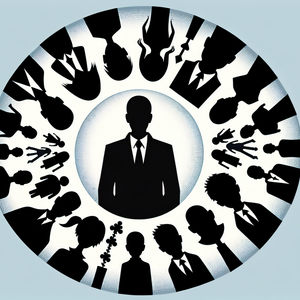The Evolution of Clown Horror in Cinema

Clown horror in cinema finds its origins in the early 20th century, where clowns were primarily portrayed as benign figures designed to evoke laughter. However, this portrayal began to shift with the 1990 miniseries adaptation of Stephen King's It. The character of Pennywise, a malevolent clown, introduced audiences to a sinister side of clowning, feeding on the fears of children and embodying the unknown horrors that lurk just beneath the surface of everyday life. Pennywise's blend of charm and menace resonated deeply with viewers, tapping into primal fears and laying the groundwork for future representations of clowns in horror. Many critics point to It as a pivotal moment in the genre, illustrating how a seemingly innocuous figure could morph into a vessel for dread. The character’s ability to manipulate fear and embody the unknown made him iconic, demonstrating that clowns could evoke terror just as easily as they could elicit laughter.
The Rise of Terrifier: A New Era of Clown Horror
The release of Terrifier in 2016 marked a significant turning point in the clown horror subgenre. Art the Clown, portrayed by David Howard Thornton, emerged as a uniquely terrifying figure who rejected the traditional comedic elements typically associated with clowns. Art’s character is defined by his silence; he communicates through exaggerated physicality and grotesque visual gags, creating an atmosphere of unpredictability and fear. Terrifier combines slasher tropes with a disturbingly unsettling aesthetic, raising the stakes of horror cinema. Its success can be attributed to its unapologetic embrace of the grotesque, pushing the boundaries of gore and violence. Unlike previous iterations of clown horror that often contained elements of humor, Terrifier presents a raw and unfiltered depiction of terror, showcasing Art’s merciless brutality. The film's success at the box office and within horror communities highlights a shift in audience preferences. Viewers are drawn to the film not just for its shock value but for its ability to challenge their expectations and immerse them in a chilling experience. This new era of clown horror redefines the genre and invites audiences to confront their deepest fears.
Societal Fears and Clown Horror
The evolution of clown horror is not solely a product of cinematic creativity; it also reflects broader societal fears. Once symbols of joy and innocence, clowns have increasingly come to represent darker aspects of human nature. Real-life incidents of violence involving clowns, such as the 2016 "clown sighting" phenomenon, have intensified public apprehension, amplifying the cultural shift in how clowns are perceived. This juxtaposition of laughter and horror taps into a profound discomfort within audiences, compelling them to question their feelings toward these figures. The psychological underpinnings of clown horror reveal a complex relationship between fear and entertainment. Films like Terrifier allow audiences to confront their fears in a controlled environment, providing a cathartic experience that enables them to engage with their emotions safely. The duality of clown horror illustrates why this genre remains so potent. By blending elements of laughter with visceral terror, clown horror taps into the multifaceted nature of human experience, offering audiences a chance to explore their anxieties and fears while still being entertained.
The evolution of clown horror in cinema serves as a compelling reflection of societal fears and storytelling. From the innocent antics of early clowns to the menacing figures like Art the Clown, this genre has adapted to mirror our deepest anxieties and cultural shifts. Terrifier stands as a landmark film, reinvigorating the killer clown trope and challenging audiences to confront the darker aspects of their psyche. As we continue to explore the intersection of laughter and fear, clown horror will undoubtedly remain a captivating and ever-evolving element of the cinematic landscape. The enduring legacy of clowns in horror reminds us that sometimes, the things that make us laugh can also make us scream.
Horror Film Screenwriter
Blumhouse Productions, A24, independent horror studios
Core Responsibilities
Develop original horror scripts that explore psychological themes and societal fears, similar to the evolution of clown horror in cinema.
Collaborate with directors and producers to refine scripts and ensure they align with the intended vision.
Research horror genre trends and culturally relevant themes to create compelling narratives.
Required Skills
Strong storytelling skills with a focus on character development and suspense.
Knowledge of horror tropes and the ability to subvert audience expectations.
Previous experience in screenwriting or a related field, with a portfolio of completed scripts.
Cinematographer for Horror Films
Major film studios, independent filmmakers, streaming platforms
Core Responsibilities
Design and execute the visual style of horror films, using lighting and camera angles to evoke fear and tension.
Collaborate closely with the director to create a cohesive visual narrative that enhances the storytelling.
Experiment with unconventional camera techniques that reflect the unsettling nature of horror, similar to the visual aesthetics in Terrifier.
Required Skills
Proficiency in camera operation and lighting techniques, especially in low-light environments.
Experience with color grading and creating atmospheric visuals that heighten suspense.
A strong portfolio showcasing work in the horror genre or similar fields.
Special Effects Makeup Artist
Film production companies, theater groups, haunted attractions
Core Responsibilities
Create realistic and grotesque makeup effects that align with the themes of horror films, enhancing the visceral experience for viewers.
Collaborate with directors and actors to ensure that makeup supports character development and storytelling.
Stay updated on the latest trends and techniques in special effects to push the boundaries of horror aesthetics.
Required Skills
Expertise in prosthetics, face painting, and various makeup application techniques for horror effects.
Strong understanding of anatomy and the ability to create lifelike representations of injuries or supernatural features.
A portfolio that demonstrates creativity and skill in horror makeup effects.
Horror Film Marketing Specialist
Film studios, marketing agencies, streaming services
Core Responsibilities
Develop and execute marketing strategies for horror films, focusing on engaging target audiences through innovative campaigns.
Analyze audience preferences and cultural trends, similar to the societal fears explored in clown horror, to tailor marketing messages.
Collaborate with the creative team to produce promotional materials that evoke the film's themes and tone.
Required Skills
Strong analytical skills to gauge audience reaction and adapt marketing strategies accordingly.
Experience in digital marketing and social media engagement, particularly within the horror genre.
Excellent communication skills and the creativity to craft compelling narratives around horror films.
Film Critic Specializing in Horror
Film publications, blogs, online horror review sites
Core Responsibilities
Write reviews and analyses of horror films, focusing on thematic elements, cultural significance, and audience reception.
Attend film festivals and screenings to provide timely critiques and insights into emerging trends in horror cinema.
Engage with the horror community through social media and articles, discussing the evolution of genres like clown horror.
Required Skills
Strong writing and analytical skills to effectively articulate thoughts on film elements and cultural relevance.
In-depth knowledge of horror films, including historical context and contemporary shifts in the genre.
Ability to engage with audiences through various platforms and foster community discussions.


